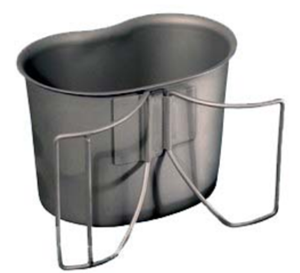
History of coffee drinking

According to a story written down in 1671, coffee was first discovered by the 9th-century Ethiopian goat-herder Kaldi. In the 1400s, coffee was brewed in Sufi monasteries.
During the Ottoman Empire, coffee was sold at marketplaces before becoming favored in court. From there, the coffee house emerged.
By the 17th century, coffee had made its way to Europe and became popular across the continent. There were over 300 coffee houses in London, many of which attracted like-minded patrons, including merchants, shippers, brokers and artists.
In 1909, an Anglo-Belgian inventor named George Washington successfully mass-produced instant coffee. Established in 1910, the G. Washington Coffee Refining Co., with production facilities in Brooklyn, N.Y., initially sold as “Red E Coffee.”
The discovery of Stainless Steel

In 1913, Harry Brearley of Sheffield, UK, discovered ‘rustles’ steel. He stumbled upon this discovery while trying to solve the problem of erosion of the internal surfaces of gun barrels for the British army during the onset of the First World War.
Although there had been many prior attempts, Brearley has been credited with inventing the first stainless steel, which had a 12.8% chromium content. He had added chromium to molten iron to produce a metal that did not rust. Chromium is a crucial ingredient, as it provides resistance to corrosion.
Due to its corrosion resistance, high tensile strength and durability, manufacturers use it to create a stainless steel cup, providing a tremendous advantage for coffee drinkers during travel—outdoor travel, such as trekking or living in tents outdoors on a camping trip.
Invention of the modern stainless steel canteens and cups

Corrosive resistant steel canteens were made from 1942 to 1945. In late 1942 aluminum was released by the War Production Board, and production of aluminum M-1910 canteen cups was resumed.
In 1946, Cotter and Davis came up with the idea of a permanently sealed double-walled tumbler. The double-wall insulation is made by inserting a liner inside an outer shell, creating a layer of air between them. The two liners are then permanently fused together. The insulation reduces condensation and keeps beverages hotter or colder longer than non-insulated cups and glasses.

In 1974 the canteen cup was redesigned as part of the LC-1 equipment. The cup was produced in stainless steel with a flat upper edge similar to the corrosive resistant steel cup of 1942. However, instead of a single folding handle, the cup had two steel wire handles that open out for use, and fold flat against the side of the cup when placed in the canteen cover. This cup remained in use into the 21st century.
Importance of salt spray testing for stainless steel

Stainless steel is steel with a chromium content of more than 10.5%. The percentage of the Chromium content is necessary to form a stable passive chromium oxide (Cr2O3) layer. This passive layer protects the underlying material from corrosion damage from the surrounding environment.
By using corrosion testing to establish the suitability of stainless steel for its intended use, manufacturers can inspect if the grade of the stainless steel is suitable for seafront use. Corrosion analysis can also help identify a corrodent or an environmental cause if an unexpected corrosion problem occurs.
The salt spray fog test (ASTM B117) is one of the most known accelerated corrosion tests. It consists of atomizing a salt solution into uniform droplets on specimens supported or suspended between 15-30° from the vertical. The test produced relative corrosion-resistance information for metal samples exposed in a test chamber by providing a controlled corrosive environment.
Contact us to know more on our Chemical Analysis Testing
Our expert team utilizes the best equipment to provide accurate and consistent results. At PTS, we offer several techniques for quantifying your chemical components for various materials.
Get in touch with PTS to discover how our chemical analysis services can help you to verify a material certification or to obtain a detailed breakdown of unknown material in your samples.









